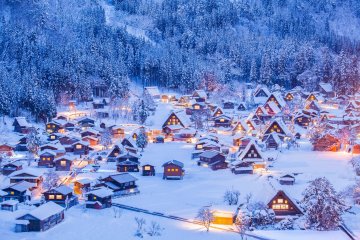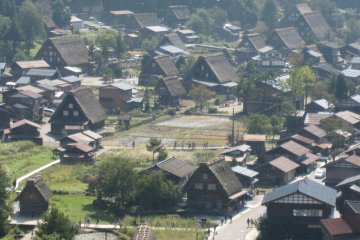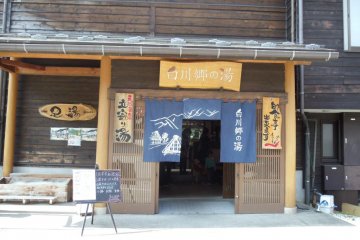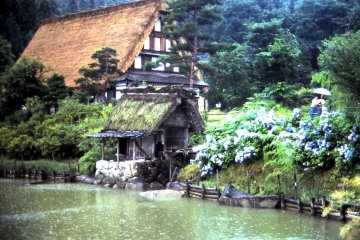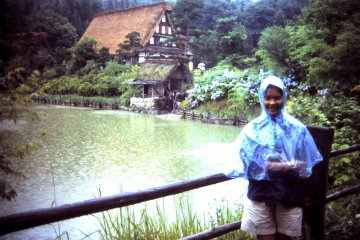The atmosphere at Shirakawago village made me feel like I was walking through a time tunnel into the past, where people live in harmony with surrounding nature, a place that can hardly be found today. Try to close your eyes and imagine.
As a remote area in the valley, it resembles a small peasant farmhouse village. The farmhouses are not tiny but not too big, about 3-4 stories tall with steep slope thatched roofs. In the spring there are colorful flowers. In the summer there are lush green rice fields. In autumn there is some mist flowing through orange and red leaves. And winter is a very special time when snow carpets throughout the valley garnish the village into the picturesque scenery.
I went to Shirakawago in June. It was the rainy season that is known as tsuyu in Japanese. Shirakawago village was also beautiful in a different way. In the rain, purple-blue flowers of ajisai or hydrangea bloom beautifully. And another advantage that comes with the rain is smaller crowds than any other time.
No matter what season, Shirakawago is always beautiful.
Shirakawago means ‘Old District of the White River’. It is located in the village of Shirakawa in Gifu Prefecture. There are old farmhouses that people still live in. The farmhouses were built in the prayer hands style or gasshô-zukuri, which are extraordinary and unique. This steep slope style was desinged so snow could flow down from the roof and not built up on the roof too much because this area will get lots of snow in the winter. In the past, the large lofts were used for raising silk worms.
Besides the farmhouses, there is a small charming shrine, Shirakawa Hachiman. There is a thatched roofed bell tower that I really like. The shrine has produced sake since ancient times, using fresh water of melted snow from the mountains. Every year in mid-October, the shrine is hosting Doburoku Matsuri. ‘Matsuri’ means festival. There was Shishi parade or eight leg lion, native bands, folk songs and ‘Shishimai’ Lion dance. It also has sake tasting as well.
In other times beside the festival, Shirakawa Hachiman shrine is still worth a visit. I really liked the tranquility of this place, towering cedar, simple shrine buildings, my favorite bell tower, even a small tub made of stone was spectacular.



